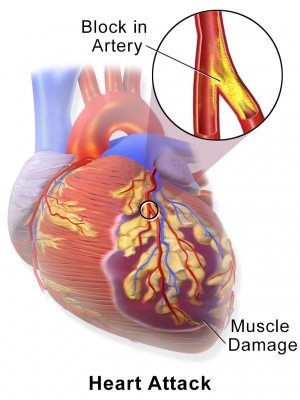
Patients with both a high lipoprotein(a) and high coronary artery calcium score (CAC) face a more than 20% risk of heart attack or stroke over the following 10 years, according to findings from a multicenter study led by preventive cardiologists at University of Texas (UT) Southwestern Medical Center.
“We are hopeful that by making the connection between Lp(a) and CAC as dual risk drivers, we can raise awareness in the medical community and improve earlier heart attack prevention for these patients,” said cardiologist Parag Joshi, M.D., Associate Professor of Internal Medicine at UT Southwestern.
“Our data may also expedite the development of treatments designed specifically for this high-risk population,” said Dr. Joshi, a member of the Clinical Heart and Vascular Center at UT Southwestern.
Approximately one in six people in the U.S. have high Lp(a), a type of bad cholesterol whose levels are driven largely by one’s genes. Coronary artery calcium, known as CAC, is a marker of plaque deposits around the heart.
The team of researchers, which included researchers from Emory University, found that participants with combined high Lp(a) and high CAC had a 22% 10-year risk of heart attack or stroke, compared with a 10-15% 10-year risk in patients who had either risk factor alone.
Investigators identified three distinct risk-related trends:
- High Lp(a), high CAC: These individuals face the highest 10-year risk of heart attack or stroke.
- High Lp(a), zero CAC: 10-year heart attack and stroke risk is low when there is no CAC, even if Lp(a) is high.
- Low Lp(a), high CAC: 10-year heart attack or stroke risk is higher than average but lower than with high LP(a) and high CAC combined.
The findings are online in the Journal of the American College of Cardiology(JACC) and will appear in the March print edition.
“Establishing the connection between Lp(a) and CAC means we can move to the important next phase of research, which will be defining and personalizing early screening protocols to identify patients at high risk of heart attack,” said Dr. Joshi, whose research focuses on assessing risk for heart attack and stroke, CAC, cholesterol, and coronary CT angiography. “With further research, this could mean selectively scanning patients with high Lp(a) for their CAC score, and studying therapies specifically designed to reduce Lp(a) among patients with high CAC.”
Cardiology researchers confirmed the Lp(a) and CAC connection by comparing data from two landmark cardiovascular trials:
- The Dallas Heart Study, an ongoing comprehensive study of 6,000 diverse and heart-healthy patients conducted by UT Southwestern from 2000 to present
- Multi-Ethnic Study of Atherosclerosis (MESA): A 6,000-participant study investigating early-stage atherosclerosis (hardening of the arteries).
UT Southwestern Medical Center

